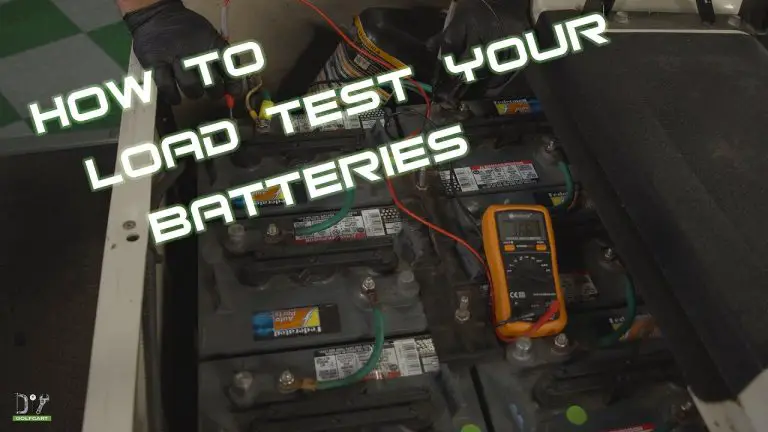How Far Will a Golf Car Go on a Full Charge
Imagine a serene morning on the golf course, cruising from one hole to another in a golf car, enjoying the beautiful surroundings and focusing on your game. But as you embark on your golfing adventure, an important question arises: how far will your golf car go on a full charge? Understanding the range of a golf car is crucial for planning your rounds, ensuring convenience, and avoiding any unexpected disruptions on the course.
In this comprehensive guide, we will delve into the factors that determine the distance a golf car can travel on a single charge. From battery capacity and efficiency to driving behavior and environmental conditions, we will explore every aspect that contributes to the range of a golf car. By understanding these factors, you will be equipped with the knowledge to make informed decisions about your golf car usage, optimize your range, and make the most of your time on the course.
Whether you’re a seasoned golfer or new to the game, this article will provide you with valuable insights and practical tips to extend the range of your golf car. From exploring the impact of battery technology and maintenance to understanding how driving habits and environmental conditions affect range, we will cover it all. Get ready to unlock the secrets to maximizing your golf car’s range and enjoy uninterrupted golfing pleasure from the first hole to the last.

Factors Affecting the Range of a Golf Car
Battery Capacity: The first and foremost factor that determines the range of a golf car is its battery capacity. A golf car’s batteries come in different sizes, typically measured in voltage and ampere-hours (Ah). The higher the battery capacity, the longer the range. Golf cars with higher-capacity batteries can travel greater distances on a single charge, providing more flexibility during your golf round. It’s important to consider the battery capacity when choosing or operating a golf car to ensure it meets your range requirements.
Terrain and Course Conditions: The terrain and course conditions play a significant role in determining the range of a golf car. Hilly courses or courses with challenging terrain can put additional strain on the batteries, reducing the overall range. Uphill climbs and rough terrain require more power to navigate, consuming the battery charge at a faster rate. Similarly, courses with longer distances between holes can also impact the range. It’s important to consider the nature of the golf course and adjust your expectations accordingly when planning the usage of a golf car.
Battery Technology and Efficiency
Battery Types: Golf car batteries come in different types, including lead-acid and lithium-ion batteries. Each type has its own characteristics that affect range and performance. Lead-acid batteries are commonly used in golf cars due to their affordability, but they tend to have lower energy density and may offer a more limited range compared to lithium-ion batteries. On the other hand, lithium-ion batteries are known for their higher energy density, allowing for a longer range. When considering a golf car, it’s worth evaluating the battery type and its impact on the range to make an informed decision.
Battery Efficiency and Maintenance: The efficiency of the batteries and how well they are maintained can significantly influence the range of a golf car. Proper maintenance practices, such as regular charging, avoiding deep discharges, and keeping the batteries clean and dry, can help optimize their performance and extend the range. Battery efficiency also depends on factors like age and overall health. As batteries age, their capacity may diminish, affecting the range. Regular inspection and maintenance of the batteries can ensure they operate at their optimal efficiency, maximizing the distance covered on a full charge.
Driving Behavior and Range Optimization
Speed and Acceleration: Driving behavior, including speed and acceleration, plays a crucial role in determining the range of a golf car. Aggressive driving with frequent and rapid acceleration can drain the battery charge more quickly, reducing the overall range. Maintaining a consistent and moderate speed, and gradually accelerating when necessary, can help conserve energy and extend the range. Practicing smooth and controlled driving techniques can not only enhance safety but also contribute to maximizing the distance covered on a full charge.
Energy Conservation Techniques: Implementing energy conservation techniques while operating a golf car can significantly impact the range. There are several practical strategies to conserve energy and optimize range. For example, minimizing unnecessary stops and starts, avoiding excessive idling, and utilizing regenerative braking systems (if available) can help recapture energy and increase efficiency.
Furthermore, reducing wind resistance by keeping the golf car’s speed within a reasonable range and avoiding unnecessary drag-inducing actions, such as leaving bags or equipment on the roof, can contribute to maximizing range. Additionally, optimizing the use of accessories, such as headlights or stereos, by only operating them when necessary, can help conserve battery power and extend the distance covered.
Environmental Conditions
Temperature: Environmental conditions, particularly temperature, can have a significant impact on the range of a golf car. Extreme temperatures, whether hot or cold, can affect battery performance and overall range. In cold temperatures, batteries may experience reduced efficiency and capacity, resulting in a shorter range. On the other hand, high temperatures can increase battery self-discharge and accelerate capacity loss over time. It’s important to be mindful of the environmental conditions and adjust expectations accordingly. Storing and charging the golf car in a suitable environment can help maintain battery performance and optimize range.
Wind and Slope: External factors such as wind and slope can also influence the range of a golf car. Strong headwinds can increase resistance, requiring more power to maintain the desired speed and ultimately reducing the range. Similarly, uphill slopes demand additional energy to overcome the gravitational force, affecting the overall distance covered on a full charge. Being aware of these factors during your golf round and adjusting driving techniques accordingly can help optimize range and preserve battery power.
Manufacturer Specifications and Testimonials
Reviewing manufacturer specifications for range: When assessing the range of a golf car, it is important to review the manufacturer’s specifications. Manufacturers typically provide an estimated range for their golf car models, which serves as a useful reference point. However, it is essential to note that the stated range may vary based on various factors, including terrain, driving conditions, battery health, and load. Therefore, while manufacturer specifications offer a general idea, it’s important to consider them as a guideline rather than an absolute measure of the range.
User Testimonials and Real-world Range Experiences: In addition to manufacturer specifications, seeking user testimonials and real-world range experiences can provide valuable insights. Golfers who have used the specific model of golf car can offer practical feedback on the range they have achieved in different scenarios. Their experiences can provide a realistic understanding of the range potential and help you gauge the performance of the golf car under various conditions. Engaging in golfing communities, online forums, or speaking directly with golf car owners can provide a wealth of information to inform your expectations.
Range Extenders and Charging Infrastructure
Range Extender Options: If you find that the range of your golf car is not meeting your needs, there are range extender options available in the market. These can include additional battery packs or accessories designed to supplement the existing battery system and extend the range. It’s important to research and evaluate the compatibility, effectiveness, and safety of these range extender options before making a decision. Consulting with professionals or authorized dealers can help you explore suitable options for your specific golf car model.
Charging Infrastructure and Availability: To ensure uninterrupted usage and optimal range, having a reliable charging infrastructure is crucial. Golf courses and facilities with dedicated charging stations provide convenient opportunities to recharge your golf car during breaks or overnight. Being aware of the availability and location of charging stations on the course or nearby can help you plan your golf round accordingly. Additionally, considering the charging time required for a full recharge is important for managing range during extended periods of use.
Summary and Conclusion
Understanding the range of a golf car on a full charge is essential for planning and optimizing your golfing experience. Factors such as battery capacity, efficiency, driving behavior, environmental conditions, and the availability of range extenders and charging infrastructure all influence the distance covered by a golf car. By considering these factors and implementing strategies to optimize range, such as maintaining a moderate driving speed, practicing energy conservation techniques, and being mindful of environmental conditions, you can maximize the distance covered on a full charge.
Remember to consider the battery type and capacity when choosing a golf car, as higher-capacity batteries can provide a longer range. Regular maintenance and proper charging practices can help ensure optimal battery efficiency and extend the overall range. Being aware of the impact of external factors like wind, slope, and temperature can also help you plan your golf round and adjust your driving techniques accordingly.
While manufacturer specifications provide a general estimate of the range, it’s important to seek user testimonials and real-world experiences to gain a more realistic understanding of the golf car’s performance. Engaging with the golfing community and consulting with professionals can provide valuable insights and help set appropriate expectations.
If you find that the range of your golf car is insufficient for your needs, exploring range extender options can be a viable solution. Additional battery packs or accessories designed to extend the range can provide the extra distance you require. However, it’s crucial to research and evaluate the compatibility, effectiveness, and safety of these options before making a decision.
Lastly, ensuring access to a reliable charging infrastructure is essential for maximizing range. Being aware of the availability and location of charging stations on the golf course or nearby can help you plan your golf round and manage range during extended periods of use.
In conclusion, the range of a golf car on a full charge is influenced by various factors. By considering battery capacity, efficiency, driving behavior, environmental conditions, and exploring range extender options, you can optimize the distance covered and enjoy a seamless golfing experience. Stay informed, practice energy conservation techniques, and make use of available charging infrastructure to make the most out of your golf car’s range. With careful planning and mindful usage, you can focus on your game and enjoy your time on the course without concerns about range limitations.




